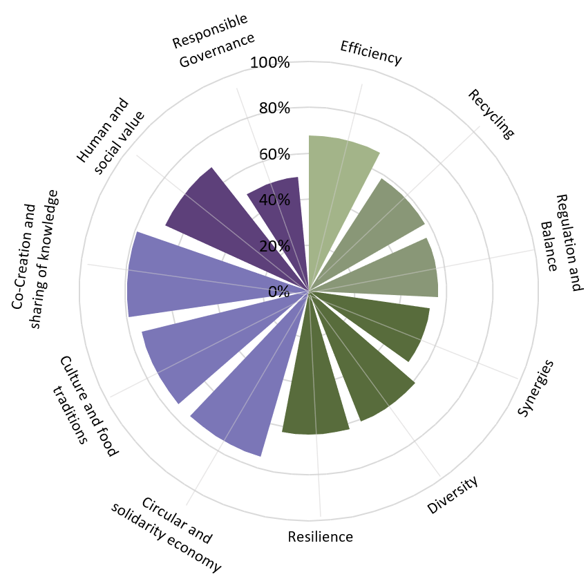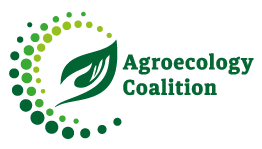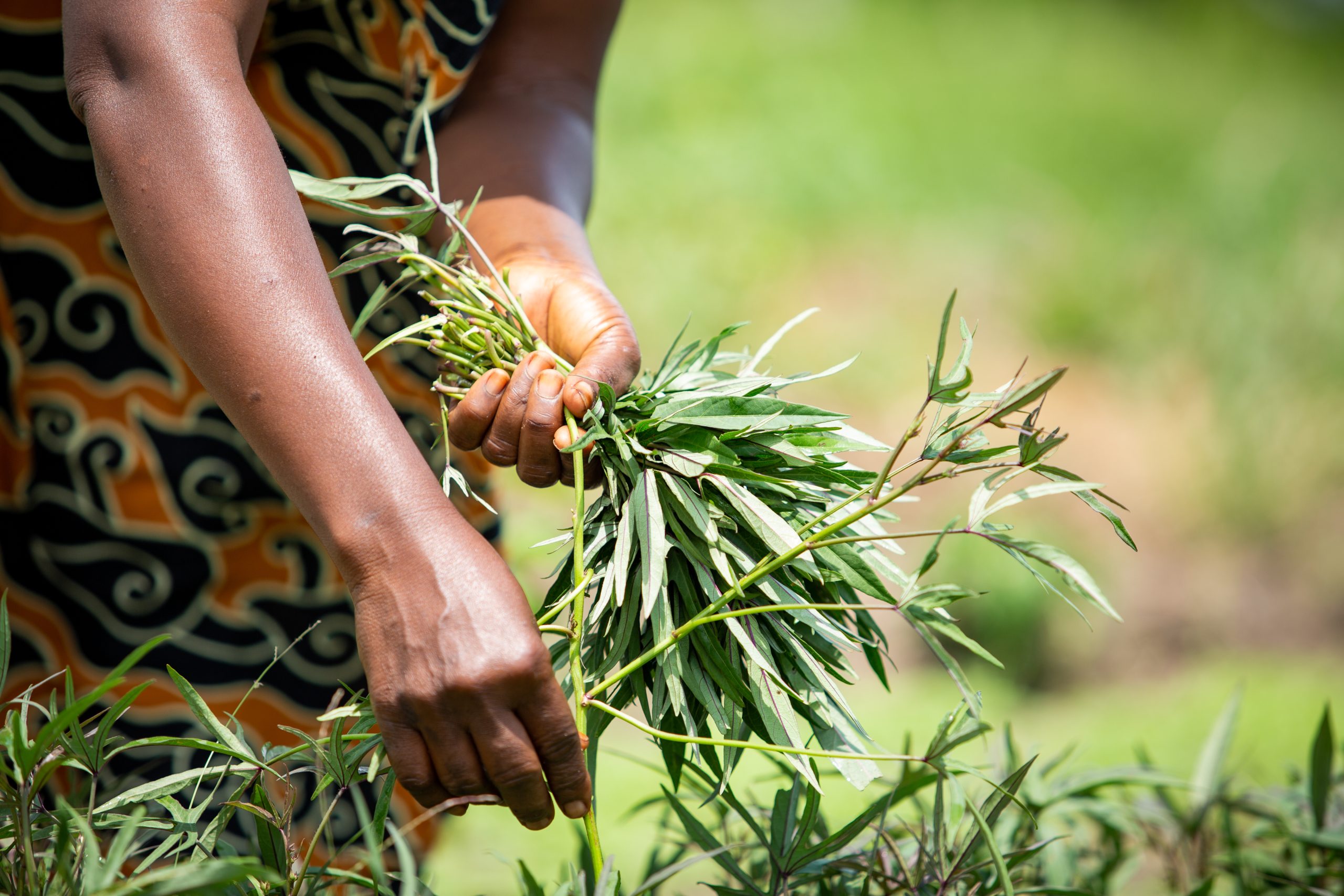Agrobiodiversity on a plate
Consumption of Resilient Orphan Crops & Products for Healthier Diets (CROPS4HD)
Niger, Chad, Tanzania and India
CROPS4HD seeks to improve food security and nutrition of smallholder farmers, especially women, through sustainable use and conservation of farmers’ varieties/landraces, neglected and underutilized species respecting agroecological approaches. This project is being implemented in Niger, Chad, Tanzania and India by SWISSAID, FiBL, AFSA and financially supported by SDC and LED. CROPS4HD is a very holistic agroecological project that works with and on all 10 elements/13 principles of agroecology.
Lead Organization
CROPS4HD is led by a consortium of three organizations: SWISSAID, FiBL (Research Institute of Organic Agriculture) and AFSA (Alliance for Food Sovereignty in Africa).
- SWISSAID is a Swiss NGO that has been promoting food system change and fighting hunger through agroecology in 9 countries around the globe for a number of years. In Asia, SWISSAID is working in India and Myanmar, in Africa in Tanzania, Chad, Niger, Guinea-Bissau, in Latin-America in Colombia, Nicaragua and Ecuador. SWISSAID is CROPS4HD’s consortium leader.
- FiBL is one of the world’s leading institutes in the field of organic agriculture. FiBL’s strengths lies in its interdisciplinary and participatory research, and developing innovations developed jointly with farmers and other food system actors.
- AFSA is a broad alliance of different African civil society actors that are part of the struggle for food sovereignty and agroecology in Africa.
CROPS4HD works with a number of partners. Research partners include the World Vegetable Center, Bioversity/CIAT and national agricultural research institutes. CROPS4HD also collaborates with GRAIN and APREBES in its advocacy efforts.
Country
The project operates in India (3 regions), Chad (4 regions), Niger (1 region) and Tanzania (1 region).
Timeline
The project’s implementation period is 2021-2031.
Phase 1: 01.07.2021 – 30.06.2025
Phase 2: 01.07.2025 – 30.06.2029
Phase 3: 01.07.2029 – 30.06.2031
Funding
The project costs 12,824,201 CHF (13,331,641 EUR) for the 2021-2025 period .
Most of the funding (around 75%) is provided by the Swiss Agency for Development and Cooperation (SDC).
Mission
The project focuses on Neglected and Underutilized Species (NUS). These are plant species that have excellent nutritional characteristics, but which have somehow been abandoned due to a lack of market demand, their image being poor people’s food, or a lack of deeper understanding on their nutritious and health benefits and use in local dishes, but also the lacking knowledge on their potential to face climate change. CROPS4HD wants to popularize NUS that have the potential to contribute to food security, nutrition, as well as increasing agrobiodiversity, as these diverse species represent a significant source of genetic diversity.
Context
The project operates in four very different socio-economic, cultural and agroecological contexts.
In Niger and Chad, the interventions take place in a semi-arid area, partially this is also the case in the project region in the south of Tanzania. In all four countries the programme builds on already existing agroecological interventions by SWISSAID and is working in a setting of smallholder mixed farming systems. In terms of socio-economic context, the situation is quite diverse. While in India and partially also in Tanzania NUS products have the potential to be promoted as life-style products in urban centers, the rural population in Niger and Tchad are facing regular food insecurity. The promotion and diversification of different drought resistant millet varieties or bambara nuts is an answer to address this main challenge Thus, the different contexts require different project focus and the adaption of the agroecological approaches.
Chad represents a least developed country, with an abundance of biodiverse agricultural products but as well a high incidence of malnutrition and poverty. Chad offers the opportunity to complement the SDC program Opérationalisation de la filière semencières by opening access to affordable farmer seeds and linking Formal Seed Systems and Peasant Seed Systems. Further, it will build on and make use of the SDC mandate Soutien au développement des filières karité et arachide au Tchad. The program has developed local, national and international value chains and markets for Shea butter and Peanuts and promotes the integration of neglected and unterutilized species (NUS) into those local and national markets. In Chad, the production areas of the CROPS4HD project are located in the southern part of the country – i.e. Mayo-Kebby Quest, Mandoul and Logone Oriental – and in the more central canton of Guera.
In Niger, the project builds on the former work on agrobiodiversity, agroecology and institutional strengthening of organizations and the development of local market systems and value chains (among others the policy platform Raya Karkara). Further, the project can benefit and build on a range of documented good practices in the seed saving and producing sector in Niger. In Niger, the project evolves in the bordering provinces to Mali and Burkina Faso. Interventions focus in the PUSH side on rural communities. For demand and policy activities, regional centers as well as the capital Niamey are important locations.
India was chosen as a role model for its progressive seed legislation which allows the coexistence of Formal Seed Systems and Peasant Seed Systems, an example of good practice that the project will promote to address the conflicting interests between breeders’ and farmers’ rights as stated in ITPGRFA and UNDROP. India is therefore an important voice for influencing policy during negotiations of relevant global frameworks. India’s supply-related activities are in the states Karnataka, Odisha and West-Bengal with different pedo-climatic and socio-economic contexts. Policy activities in India will target mainly state level governments and their procurement policies, due to the current situation and highly sensitive agricultural policy environment.
Tanzania represents an African lower middle-income country with emerging agroecological markets and the successful reintroduction of traditional crops (by the World Vegetable Center). At the demand side, the project integrates NUS in the established and growing organic market in urban centers. In order to enforce sourcing along value chains towards diverse and healthier food baskets CROPS4HD is further developing marketing strategies, including e-ordering and home delivery services. In parallel, CROPS4HD targets rural markets and schools to increase their assortment of higher agrobiodiversity. In Tanzania, the project region for the supply activities is in the southern part of Tanzania with a focus on Lindi and Mtwara regions. Lindi and Mtwara are two of the least populated regions in Tanzania mainland and among the poorest regions. The main source of income for Lindi and Mtwara residents is from agriculture (cashew nut and sesame) mostly small-scale. There is severe scarcity of drinking water with only one rainy season a year that falls between December and April.
Main beneficiaries
The project’s beneficiaries are mostly smallholder farmers (20,000), especially women and youth, as well as 2.5 million rural and urban middle-upper class consumers, and other value chain or market actors.
Strategy
Objectives
The overall goals are to:
(1) improve food security and nutrition of smallholder farmers, especially women,
through (2) sustainable use and conservation of farmers’ varieties/landraces focusing on NUS and
(3) respecting agroecological approaches (based on the 10 elements / 13 principles of agroecology, with an added 14th principle on gender equity).
The project used ACT to characterize its interventions and level of transition in the area of agroecology:

Following is the Assessment result:

Activities
The project has 3 components: PUSH (supply), PULL (demand), and POLICY.
The main activities structured along the three-pronged approach PUSH, PULL, POLICY are the following:
PUSH:
- The implementation at the supply side works on the biophysical factors (soil, water, biodiversity) as well as socio-economic factors (access to knowledge and innovation, social organization).
- In terms of seed system, the project has been working with seed guardians to conduct a seed inventory and characterization of the crop varieties and species, followed by participatory cultivar selection. Furthermore, it strengthens community seed banks and ensures hereby access to locally adapted quality seed to farmers.
- In terms of food system, the project implements participatory on-farm research to develop locally adapted solutions for food production. Peasant organizations are also strengthened.
- Lastly, the project has been supporting farmers with trainings on diverse agroecological farming practices, like intercropping, crop rotation, soil fertility improvement methods, etc.
PULL:
- On the PULL side, CROPS4HD aims to create demand for locally, agroecologically produced NUS. To do so, it focuses on:
- awareness creation and access to information on NUS and their nutritional benefits (food/seed fairs, information campaigns in traditional and social media, cooking classes);
- market development; and
- on strengthening consumer-producer relations. The application of the Participatory Market Chain Approach (PMCA) helped the project to create thematic groups with members along the entire value chain to develop marketable NUS-products.
POLICY:
- The project’s POLICY part addresses all levels, from local, to national, to sub-regional, and to international arenas.
- The project collects evidence in favor of agrobiodiversity, agroecology and farmer-managed seed systems (for instance, by producing case studies).
- This evidence is then used to increase awareness on these topics among relevant stakeholders, such as policy makers and government officials, by engaging in policy spaces. For instance, the project has participated in the negotiations around the Treaty on Plant Genetic Resources for Food and Agriculture to challenge the current frameworks for the benefit of peasants’ right to seeds.
- The project also collaborates with and builds the capacity of civil society, from local to international levels. This includes for instance organizing/attending events and networking with like-minded organizations.

Effects and impacts
Monitoring and Evaluation Methods:
- Baseline (2021) and endline (2025) surveys to measure all outcomes;
- Yearly monitoring at output level;
- ACT Assessment to assess agroecological transition (early 2023);
- TAPE Study in Tanzania to assess agroecological transition & interim impacts (late 2023).
Results (2023)
- Around 20 nutritional profiles of NUS analyzed;
- 8 awareness campaigns on NUS/healthy diets, reaching 3 million consumers each year;
- 39 new NUS products developed of which 15 will enter retail market;
- 6361 peasants now applying agroecological practices;
- Around 25 cultivars tested and selected according to farmers’ criteria;
- Around 20 seedbanks created/strengthened to provide NUS seeds to farmers;
- 23 government officials supporting the revision of seed regulations.
Lessons learned:
- Revitalizing knowledge about production, processing and cooking methods and nutritional benefits of NUS fosters interest among farmers and consumers.
- Highly motivated and organized peasant groups are needed to start producing lesser-known crops/NUS and implementing agroecological methods.
- Strong social cohesion (social infrastructure) is crucial to establish well-functioning community seed banks.
- A strong network of value chain actors is essential to encourage NUS production.
- Supply and demand must grow hand in hand. Multi-actor approach is complex, but necessary for a holistic agroecological transformation of food systems. Working on three components (PUSH, PULL, POLICY) simultaneously is crucial.
- Researchers must be flexible enough to adapt their approaches to local realities.
What business model/finance makes it sustainable?
- Start with the consumption/pull side: If consumer demand for NUS, producers will produce them, and they will sustain in the market.
- Mobilizing existing local actors in the value chain ensures locally anchored NUS markets.
- Using participatory approaches (PMCA and PVS) and co-creating solutions and innovations ensures ownership and sustainability.
What are the limiting factors which present a wider implementation?
- No attention on main crops at all, whereas they are the ones feeding the most the local communities
- Adverse legal frameworks in many countries
- Limited pre-existing private sector actors in very remote areas
- Substantial time investment required for scientific trials on seeds absorbs capacities for other PUSH activities and makes synchronization of progress with other parts of project (e.g. PULL) difficult.



